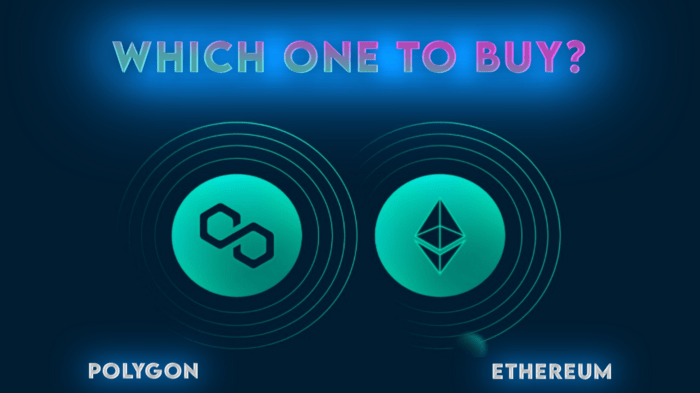What Exactly Is Polygon (MATIC)?
Polygon is a bitcoin with the symbol MATIC, as well as a technology platform that connects and scales blockchain networks.
The Polygon platform connects Ethereum-based projects by utilizing the Ethereum blockchain. Using the Polygon platform can increase a blockchain project’s fluidity, expandability, and autonomy while still providing the protection, interconnectivity, and structural benefits of the Ethereum blockchain.
MATIC is an ERC-20 token, which means it is interchangeable with other Ethereum-based digital currencies. MATIC is used to manage and safeguard the Polygon network, as well as to collect network transaction fees.
Polygon is an Ethereum side chain or Layer 2 solution that allows you to deploy Ethereum Smart Contracts, but instead of ETH, you deploy to a polygon network.
We can easily conclude that Ethereum is the primary chain and Polygon is the secondary chain.
There is a small bridge that connects these two chains. This bridge transfers assets from one chain to another by locking one side and unlocking the other.
Ethereum is a blockchain that is used to launch NFTs. NFTs are created using a blockchain. The transaction must be approved when these NFTs are minted or purchased.
The approval of a transaction requires energy, and using an Ethereum blockchain requires you to pay for the energy via a mechanism known as the Gas Fee.
The gas fee and demand have a linear relationship; thus, the higher the demand, the higher the gas fee, and vice versa. Furthermore, these Fees are higher during busy times; thus, it is best to mint during slower times of the day to get to the NFT at a lower price.
Multiple transactions submitted simultaneously on the Ethereum blockchain have caused congestion in the past.
As a result, the gas fee is high!
This is where Polygon comes in to save the day, offering solutions to Ethereum’s most pressing issue.
Polygon is an Ethereum side chain or Layer 2 solution that allows you to deploy Ethereum Smart Contracts, but instead of ETH, you deploy to a polygon network.
We can easily conclude that Ethereum is the primary chain and Polygon is the secondary chain.
There is a small bridge that connects these two chains. This bridge transfers assets from one chain to another by locking one side and unlocking the other.
To better understand this comparison, we must first examine the primary distinction between these blockchains.
Gas Fees in Polygon vs. Ethereum
Polygon’s unique value proposition is that you don’t have to pay exorbitant gas fees to mint an NFT.
There are no direct gas costs associated with using Polygon on OpenSea. However, in order to purchase an NFT on Polygon, you must pay gas fees indirectly because NFTs on the Polygon blockchain can only be purchased with Polygon ETH.
However, in order to obtain Polygon ETH, you must first bridge ETH to Polygon and pay a bridge fee. In theory, there is a gas fee associated with Polygon, but it is less expensive.
However, there are numerous gas fees associated with ETH, making it unsuitable for people with small portfolios.
TRADE-OFFS ASSOCIATED WITH POLYGON
- No auctions:
Instead of listing your NFTs for a fixed price, you can auction them on OpenSea.
You can auction it off to the highest bidder, increasing your chances of getting a higher price.
This, however, is only available on the Ethereum blockchain. Polygon is currently working to incorporate this into their blockchain.
- Less Safe:
This is not to say that the polygon blockchain is not secure. It simply means that it is less secure than Ethereum
- Unfamiliar:
70% of NFTs enthusiasts have heard of ETH, while less than 30% have heard of Polygon. However, Polygon has recently gained acceptance, and it’s only a matter of time before it becomes more popular.
It may be difficult for novice and non-technical users to use Polygon for the first time because not everyone knows how to bridge ETH to Polygon.
As a result, if you are launching your NFT on the Polygon blockchain, it is recommended that you provide a step-by-step guide on how to bridge.
THE BOTTOM LINE:
Polygon is the best blockchain to use when starting an NFT project with high-frequency and low-value transactions. ETH, on the other hand, is the best blockchain NFT project for low-frequency, high-value transactions.
Furthermore, if you are confident that your NFTs will sell even if they are expensive, Ethereum is a viable option. However, if you want to save money, Polygon should be considered.
Therefore, hire us for your NFT-related projects Development.
IMAGE CREDIT: https://miro.medium.com/

